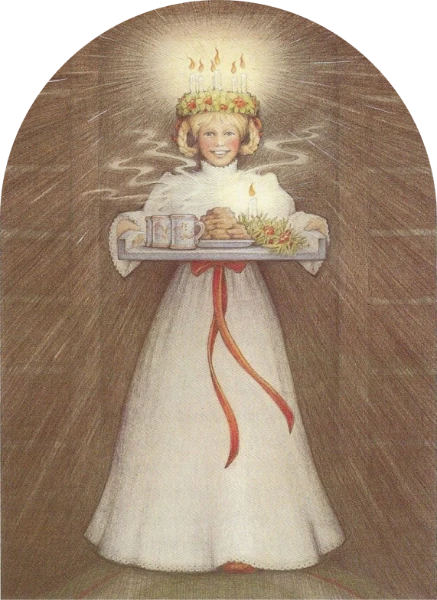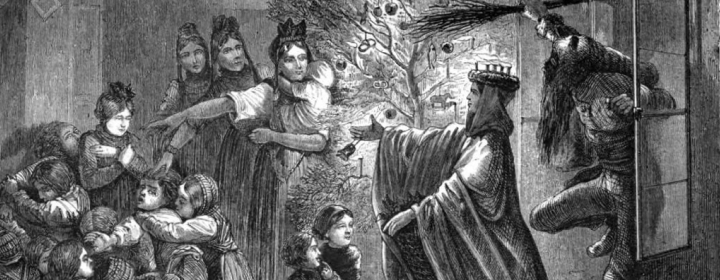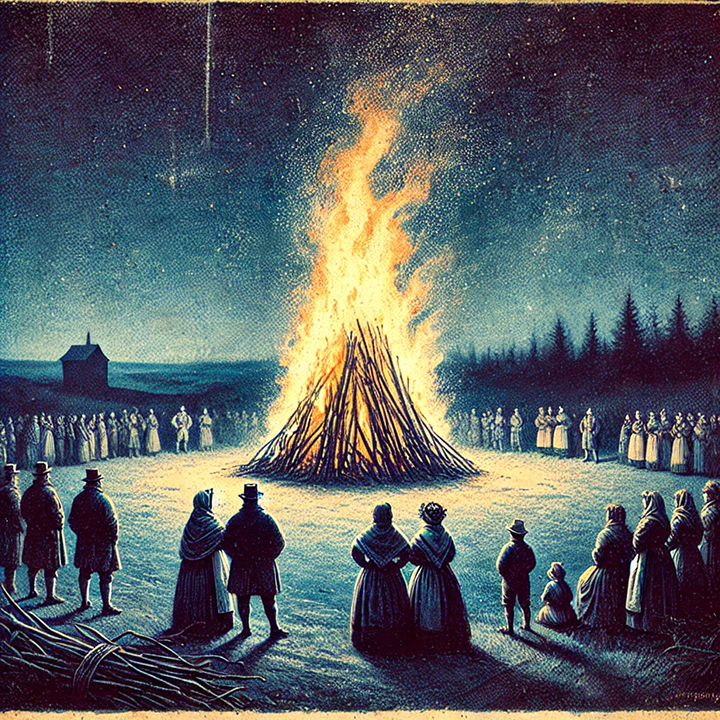Sankta Lucia

In Viking and Nordic folklore, Lussi was a dark and powerful figure associated with the winter solstice, particularly the night of December 13, known as Lussi Night (Lussinatta). She was said to be a fearsome witch or spirit who led the Lussiferda, a wild, ghostly procession of supernatural beings. On this longest night of the year, it was believed that Lussi and her followers would punish those who had not finished their winter preparations, sometimes even snatching misbehaving children. People would stay indoors, keep their fires burning, and avoid unnecessary work to protect themselves from her wrath. This folklore reflected the pre-Christian Norse fears of the dark, chaotic forces that lurked during the winter months.
With the spread of Christianity in Scandinavia, Lussi’s association with December 13 merged with the veneration of Saint Lucia, a Christian martyr from Sicily. Saint Lucia, whose name derives from the Latin lux (meaning “light”), was known for bringing aid to persecuted Christians in the catacombs, wearing a crown of candles to light her way. Over time, the Nordic Lussi and the saintly Lucia blended into the modern Swedish celebration of Sankta Lucia, a festival of light that symbolized the return of brightness in the dark winter. Today, the tradition features Lucia dressed in white with a crown of candles, leading a procession of attendants and singing songs that evoke both the protective warmth of Christian light and the lingering echoes of ancient Nordic midwinter customs.

Valborg

Valborg, also known as Walpurgis Night, is an important annual celebration in Sweden marking the arrival of spring. Observed on April 30th, the tradition involves large public gatherings where people light bonfires, sing songs, and welcome the warmer season after the long, dark Nordic winter. Communities across Sweden organize massive outdoor events, typically in parks or public spaces, where friends and families come together to enjoy traditional festivities.
The origins of Valborg date back to pre-Christian times and are linked to ancient pagan spring rituals designed to ward off evil spirits and celebrate the end of winter. In modern Sweden, the celebration has evolved into a festive, community-oriented event with strong academic and cultural significance. University towns like Uppsala are particularly famous for their elaborate Valborg celebrations, where students dressed in their traditional white caps parade through the streets, creating a vibrant and jubilant atmosphere that symbolizes hope, renewal, and the collective joy of emerging from the winter months.